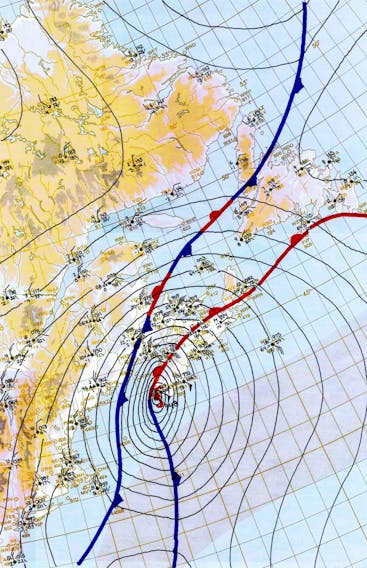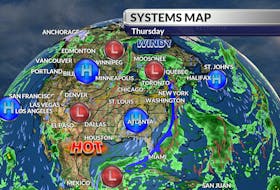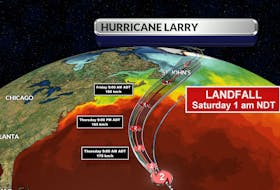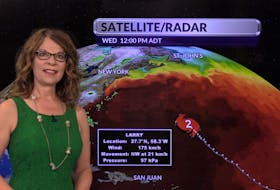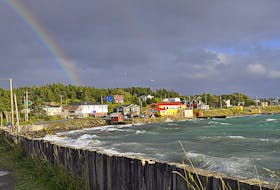Winter is less than two months away; Jack Frost has already visited many gardens and some of us have seen our first snowflakes of the season.
As we watch hurricane Epsilon track south of the Avalon this weekend, some of you are asking if it’s normal to see hurricanes off our coastlines so late in the year?
This email comes from David North: "I have a question for you today that pertains to late-season tropical storms. I was wondering if you might happen to know when the latest, moderately severe tropical storms or hurricanes have made landfall in Atlantic Canada? I’m referring to late October, or even November, hurricanes.”
Hurricane season isn’t officially over until the end of November. For us here in Atlantic Canada, the peak of the season usually comes in September, but getting back to David's question, there have been some interesting exceptions.
After doing some sleuthing, I found that one of the most powerful late-season tropical systems to reach Atlantic Canada in the last 100 years was Noel; it wasn't very long ago.
On Nov. 6, 2007, after intensifying to a hurricane north of the Bahamas, Noel headed for Cape Cod. After swiping southeast Massachusetts with hurricane-force winds, the offshore centre transitioned to a sub-tropical and then extratropical system, at which time the storm re-intensified and started to track northeastward to the Nova Scotia coast near Yarmouth. Full hurricane-force conditions occurred over much of southwestern and western areas of Nova Scotia from Yarmouth north and eastward to Halifax; wind gusts of 135 km/h were recorded on McNabs Island. There were large-scale power and utility line damage as well as widespread tree damage. In areas south of Halifax the tree damage was more severe than that which had occurred during hurricane Juan in 2003. Noel's slow transition over the southern peninsula was the main reason for the remarkable damage. Noel, in its extratropical stage, was responsible for coastal damage to some structures from waves and tides and wind damage to roofing and windows.
On Oct. 29, 1963, hurricane Ginny struck Nova Scotia as a strong Category 2 hurricane; the strongest to ever make landfall in Canada. Ginny was unusual in the fact that the hurricane produced snow. Snowfall totals were impressive, with most of the snow falling while the core of Ginny was still classified as a hurricane. Close to 120 cm or 48 inches fell in the hills of northern Maine at Mount Katahdin with 25 to 40 cm of snow from Woodstock to Charlo, New Brunswick, especially in the higher elevation.
Also, on Oct. 20, 2000, hurricane Michael struck Harbour Brenton on the Connaigre Peninsula in Fortune Bay, NL as a Category 1 hurricane. At the height of the storm, a wind gust of nearly 171 km/h was recorded and an offshore wave measured 16.7 metres. Overall, damage by Michael was light.
As we continue to watch hurricane Epsilon, the 28th named storm of the season, track south of the region, it’s important to remember that while it’s late, it’s too soon to let down our guard.
- Want more weather information? Visit your weather page.
- Have a weather question, photo or drawing to share with Cindy Day? Email [email protected]
Cindy Day is the chief meteorologist for SaltWire Network

